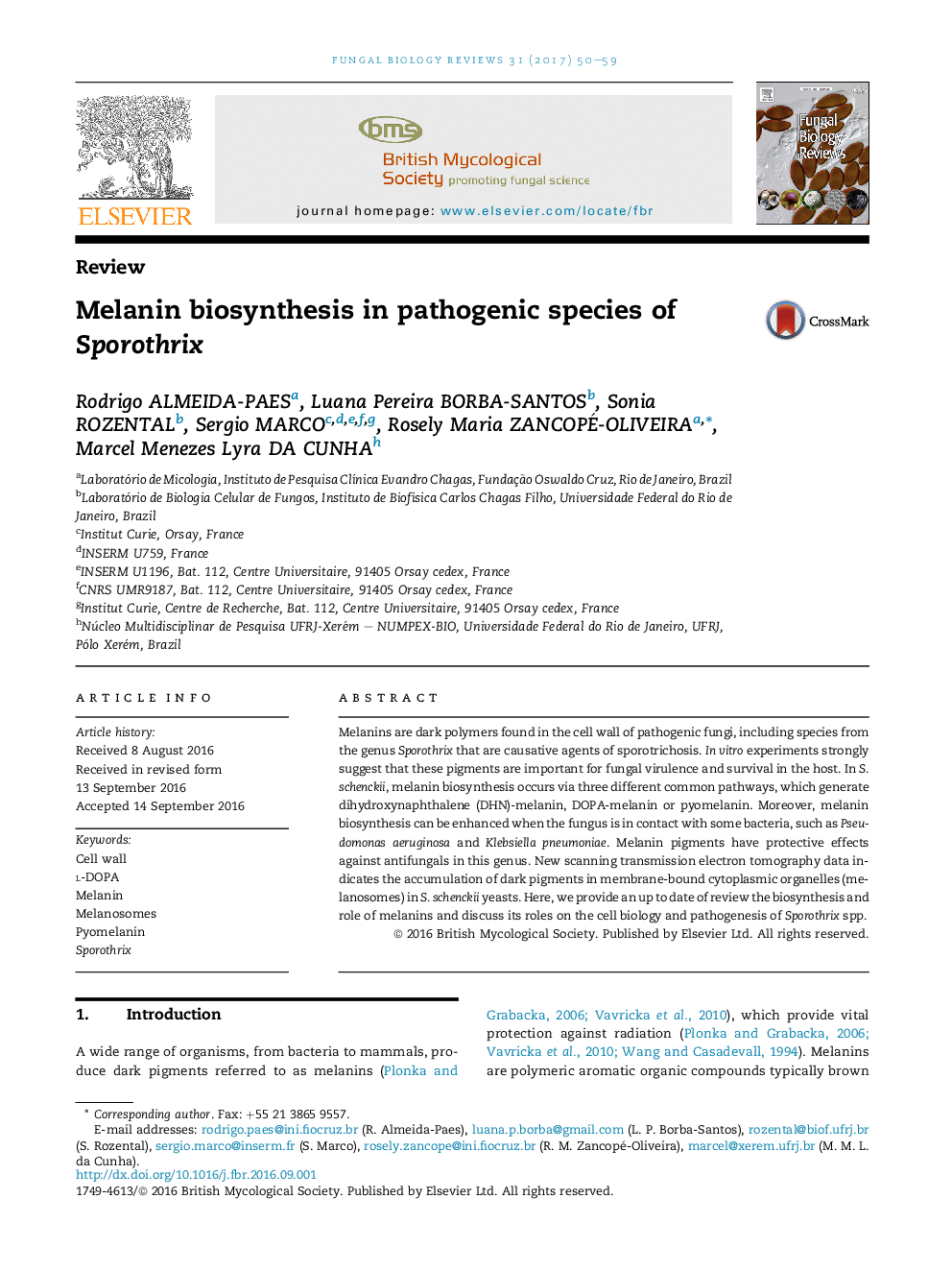| Article ID | Journal | Published Year | Pages | File Type |
|---|---|---|---|---|
| 5532505 | Fungal Biology Reviews | 2017 | 10 Pages |
â¢Pathogenic species of Sporothrix produce melanin, an important virulence factor.â¢Three different melanin types can be produced, depending on substrate availability.â¢Melanin synthesis in Sporothrix is likely to occur within melanosomes.â¢Interaction with bacteria modulates melanin synthesis in the genus Sporothrix.â¢Melanins protect Sporothrix against harsh environmental and parasitic conditions.
Melanins are dark polymers found in the cell wall of pathogenic fungi, including species from the genus Sporothrix that are causative agents of sporotrichosis. In vitro experiments strongly suggest that these pigments are important for fungal virulence and survival in the host. In S. schenckii, melanin biosynthesis occurs via three different common pathways, which generate dihydroxynaphthalene (DHN)-melanin, DOPA-melanin or pyomelanin. Moreover, melanin biosynthesis can be enhanced when the fungus is in contact with some bacteria, such as Pseudomonas aeruginosa and Klebsiella pneumoniae. Melanin pigments have protective effects against antifungals in this genus. New scanning transmission electron tomography data indicates the accumulation of dark pigments in membrane-bound cytoplasmic organelles (melanosomes) in S. schenckii yeasts. Here, we provide an up to date of review the biosynthesis and role of melanins and discuss its roles on the cell biology and pathogenesis of Sporothrix spp.
